There’s plenty of different crochet stitches to learn, however some stitches are more suited to certain projects than others. This is especially so when choosing crochet stitches for blankets!
Top crochet stitches for blankets
Choosing which crochet stitches to use for your blanket projects depends on a variety of factors. How long are you prepared to spend on it? How confident/advanced are you as a crocheter? Do you prefer working in rows, rounds or even motifs?
To make things simple for you, we’ve split our favourite blanket crochet stitches into three sections – easy stitches, colour stitches and textured stitches.
Of course, you can always just find a crochet blanket pattern that you love. Find plenty of inspiration with our Top modern crochet blanket patterns or top baby blanket crochet patterns. If you’re feeling creative and want to decide on your favourite crochet stitches for blankets, here’s our pick of the best!
undefined
Easy crochet stitches for blankets
You don’t have to have years of experience to make a crochet blanket. Here’s three easy crochet stitches for blankets that crochet beginners can try!
Treble crochet stitch
Best for beginners

You’ve learnt all of the basic crochet stitches and are ready to get started on your first crochet blanket – but which stitch to use? Quite simply, treble crochet stitch is the best for beginners!
While you can make a blanket out of any basic stitch, treble crochet stitches have many qualities that make them particularly well suited.
Firstly, the height of a treble crochet stitch will mean that it works up quicker than if you were to use a more solid stitch like a double crochet. The height of the stitch also helps to give it a looser drape, meaning it will feel nice and relaxed rather than firm or stiff.
Finally, there are also plenty of variations you can use with treble stitches to add a bit more extra interest. This could be incorporating simple stripes, or going more advanced with textured stitches such as popcorn stitch or post stitches.
If you’re feeling really brave you can try using angled clusters of treble crochet stitches like in this free striped baby blanket crochet pattern.
- Learn How to treble crochet with Gathered
Trouble with trebles?
If you’re having a go at making a treble crochet blanket and find your edges aren’t coming out straight, don’t worry. Check out our crochet troubleshooting tips to see where you’re going wrong.
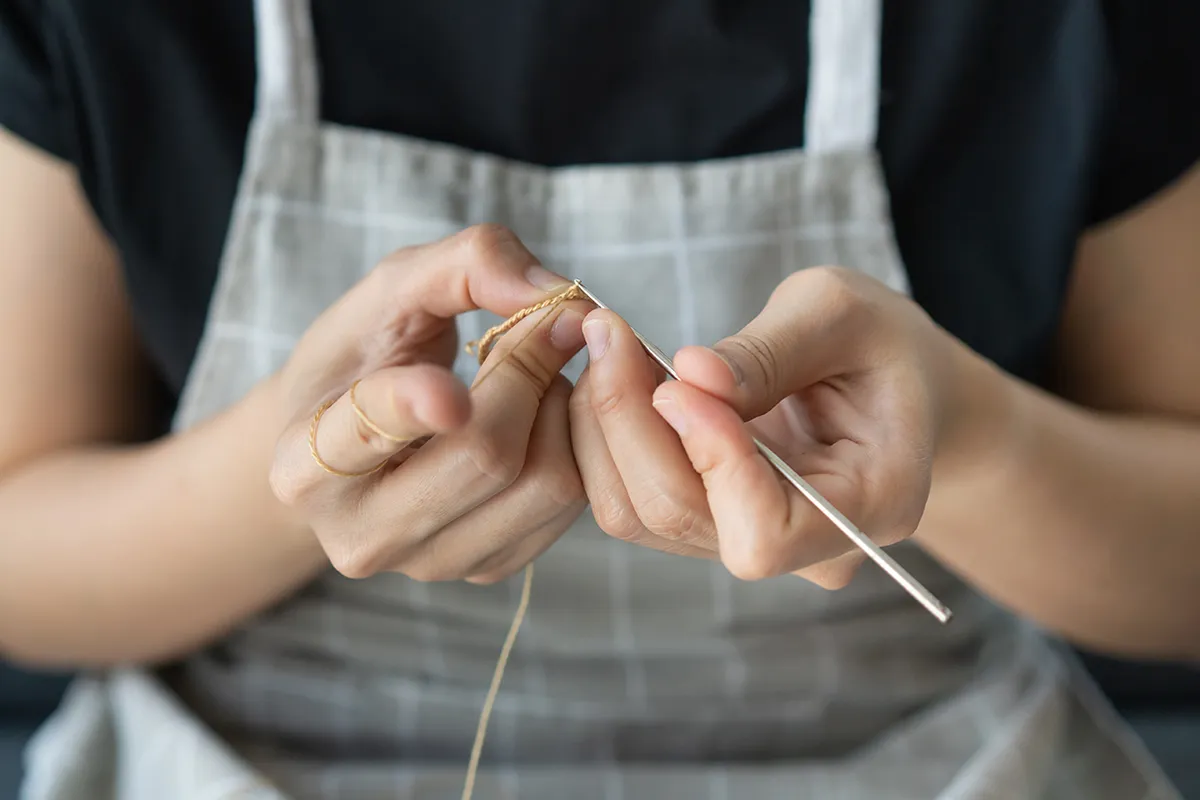
Chevrons
Best for alternative stripes

If you like the idea of making a crochet blanket out of simple stitches, but want something with that extra level of interest, chevron stitch is the one for you!
Chevron crochet stitches can initially seem quite complicated, but they’re easier than they look. They’re almost always made out of just one simple stitch, most often treble crochet stitches, however it’s the positioning and layout of the stitches that creates the unique zig zag shape.
They look brilliant when worked in stripes, especially if you alter the amount of rows that make up your stripe. There are quite a lot of variations of chevron patterns out there, but they all follow the same basic principle. We’ve even included three different methods in our tutorial to help you become a chevron connoisseur.
- Have a go with our How to crochet chevrons tutorial
Granny Squares
Best for building up big blankets

There is one way of making a crochet blanket that every crocheter simply must try at some point – granny squares!
These iconic blankets are made up of simple stitches (again mainly treble crochet stitches), but with a whole world of variants and colour combinations to try, your granny square blanket can be as simple or as advanced as you like!
The beauty of granny square blankets is that they’re made up of individual square motifs that are worked in the round. This means that you can quickly make one square at a time and then join them together, adjusting the number of squares depending on how big or small you want your blanket.
- Make a start with this Free granny square blanket crochet pattern from Gathered
More granny square goodies
Here at Gathered we love a granny square project! The best part is you can mix and match your squares as long as they’re the same size. We have loads of free granny square patterns to choose from!
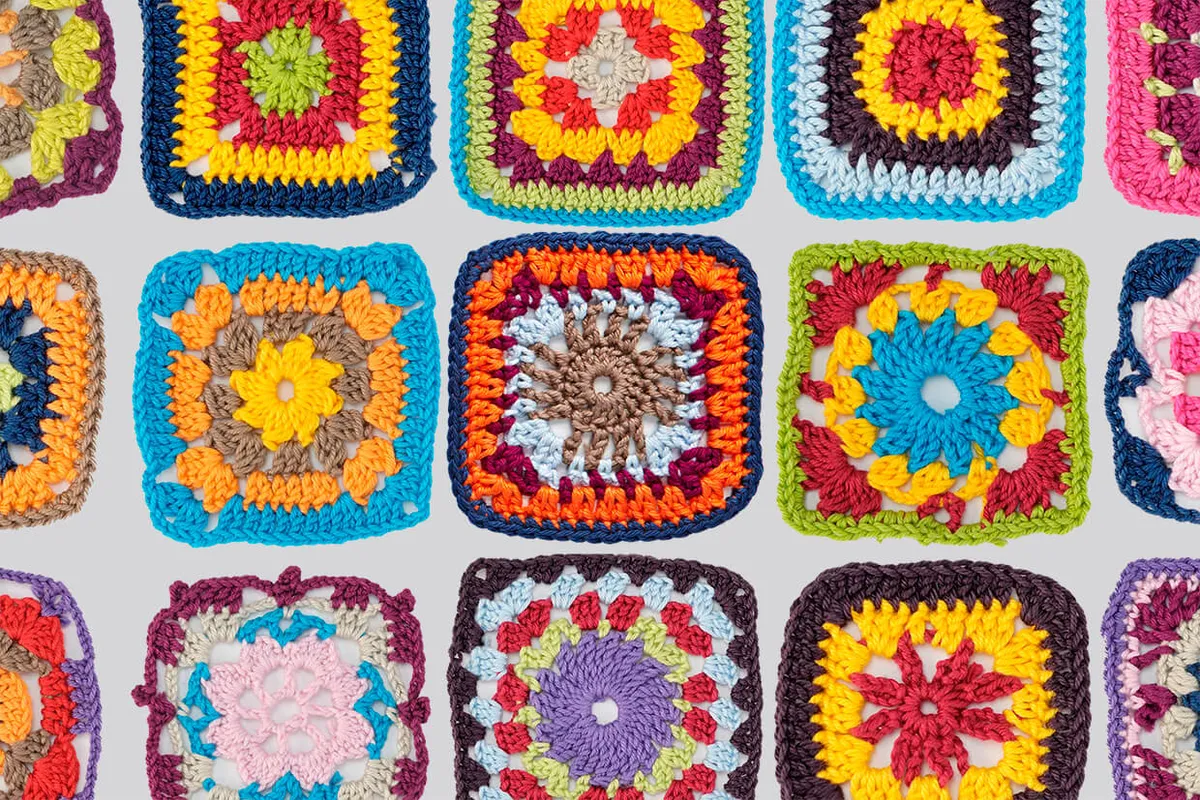
Colour crochet stitches for blankets
Feeling confident? Here’s three more crochet stitch techniques to add some colourful designs to your crochet blankets.
Corner to corner crochet
Best for easy colour block designs
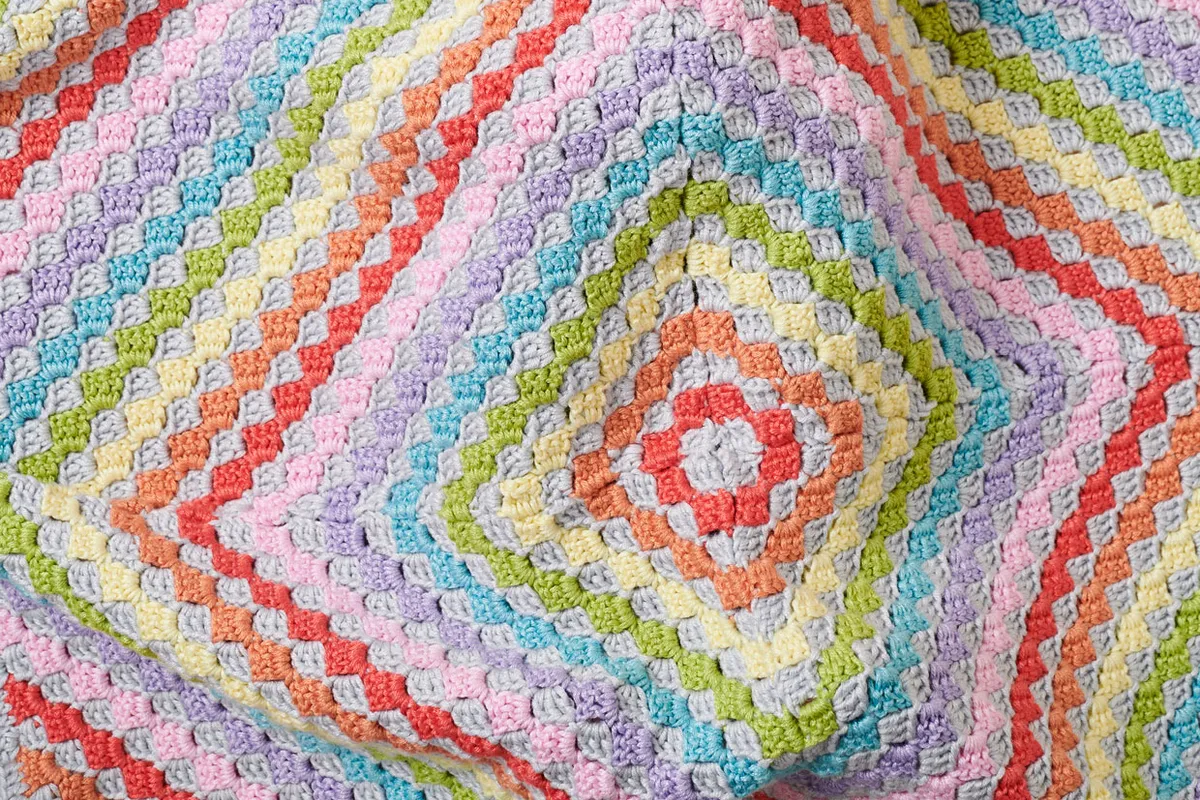
Corner to corner crochet, also known as C2C, has become increasingly popular with many crocheters in recent years. It’s brilliant for creating fun pixelated grid designs, and with a bit of squared paper you can even easily create your own custom designs. It can take a little while to understand how to do corner to corner crochet, but it’s definitely worth the effort!
The beauty of corner to corner crochet is that each block is made up of a specific combination and sequence of chains and treble crochet stitches, created in diagonal rather than horizontal rows.
As such, when creating your design, you don’t need to count stitches to know where to change colour; you simply make each block in a colour corresponding to the grid design. This makes it much easier to pick up where you left off if you need to take a break – after all, blankets do take some time to make!
- Master this fun stitch with our How to crochet a baby blanket tutorial
Fancy getting fancy?
If you want to make your crochet blanket extra special, why not try adding one of these crochet border and edging patterns to it!
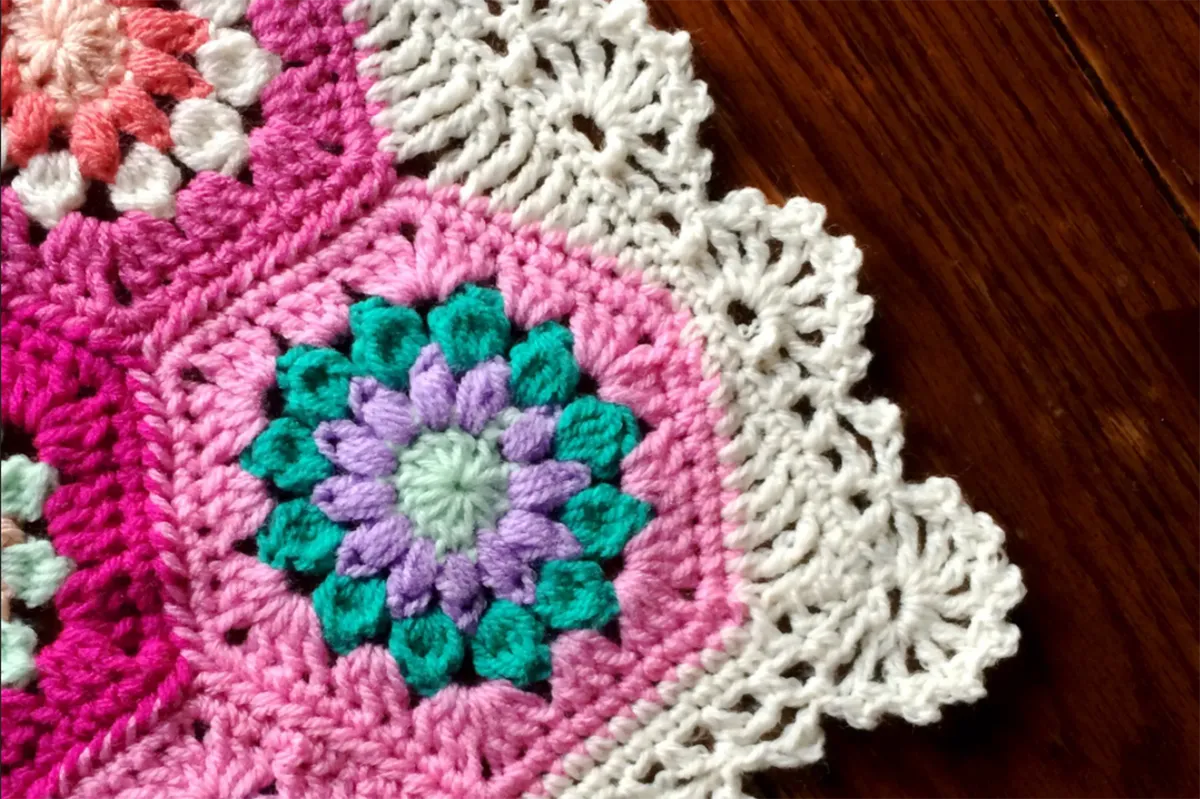
Intarsia & Tapestry crochet
Best for intricate colour designs

If you love colourful crochet designs but aren’t so keen on the pixelated style of C2C, there are plenty more ways to make colourful crochet blankets.
There are a few different ways of doing crochet colourwork, but for colourwork crochet stitches for blankets we’d recommend trying either Tapestry or Intarsia crochet. Unlike Fair Isle crochet, these techniques mean your design will be visible on both sides and don’t have any floating lengths of yarn that could get caught.
They both have their own advantages. Intarsia crochet switches between different balls of yarn and is more suited to creating specific sections of different colours, like in our free bunny baby blanket crochet pattern.
Tapestry crochet is different as it encases and hides the unused yarn underneath your stitches and creates a thicker fabric. This is a great technique if you have lots of repeats or changes in colour.
- Learn all about How to do crochet colourwork with Gathered.
Mosaic crochet
Best for advanced colour changes without the hassle

For those of you who want to get really fancy with your colourful designs, then Mosaic crochet is the stitch to try!
It’s definitely a technique for the more advanced crocheter, but one that can create incredibly precise and stunning geometric patterns and designs.
Rather than changing colours midway through a row, Mosaic crochet works by making a whole row in one colour. Then using longer stitches in another colour on the above row to cover parts of the previous colour.
This is done in one of two ways. The first is overlay, where the stitches are literally overlaid over previous stitches. The second is inset, where chain spaces are used to create a gap that is filled in by the longer stitches on the following rows.
It’s generally used for graphic 2-tone designs, however more colours can be incorporated to create truly amazing colourwork designs.
- Become a mosaic master with our How to do mosaic crochet tutorial
Textured crochet stitches for blankets
Using relief stitches can add a whole extra dimension of touchable texture and make a crochet blanket feel extra snuggly.
Basket Weave Stitch
Best for double-sided texture
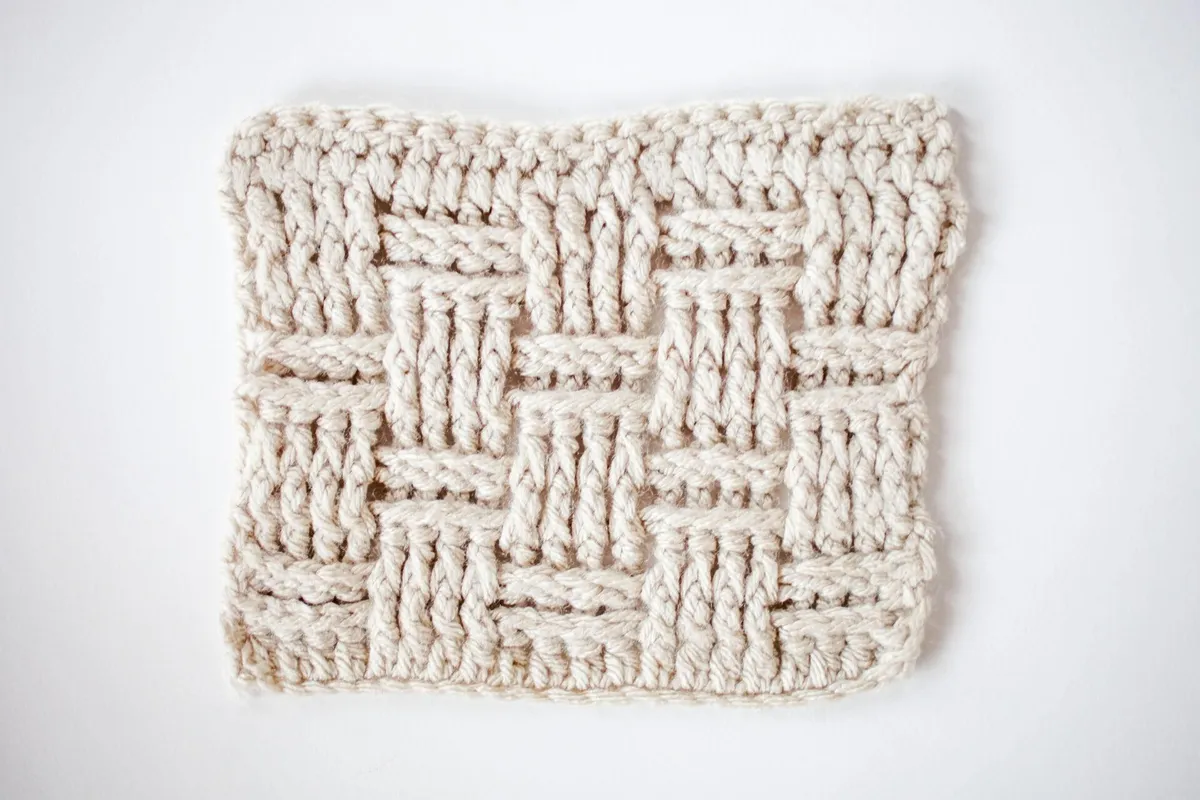
Once you know how to crochet post stitches, you already have all the skills you need to make the charming basketweave stitch. As the name suggests, this textured stitch has a woven appearance, and can be altered to produce variants of the chequered effect.
Many textured stitches produce a fabric that has a right and wrong side, but due to the way basketweave stitch is constructed it works on both sides.
Essentially, you work a portion of front post stitches, followed by a portion of back post stitches, and repeat. This pattern is then reversed, working back post stitches followed by front post stitches.
That’s a very simplified explanation, as you have to remember that a front post stitch becomes a back post stitch when you turn the work.
If you want to get more familiar with your post stitches, basketweave stitch will definitely get your skills up to pro level!
- Expand your skills with our How to crochet basketweave stitch tutorial
Puff stitch
Best for adding plump squishy texture
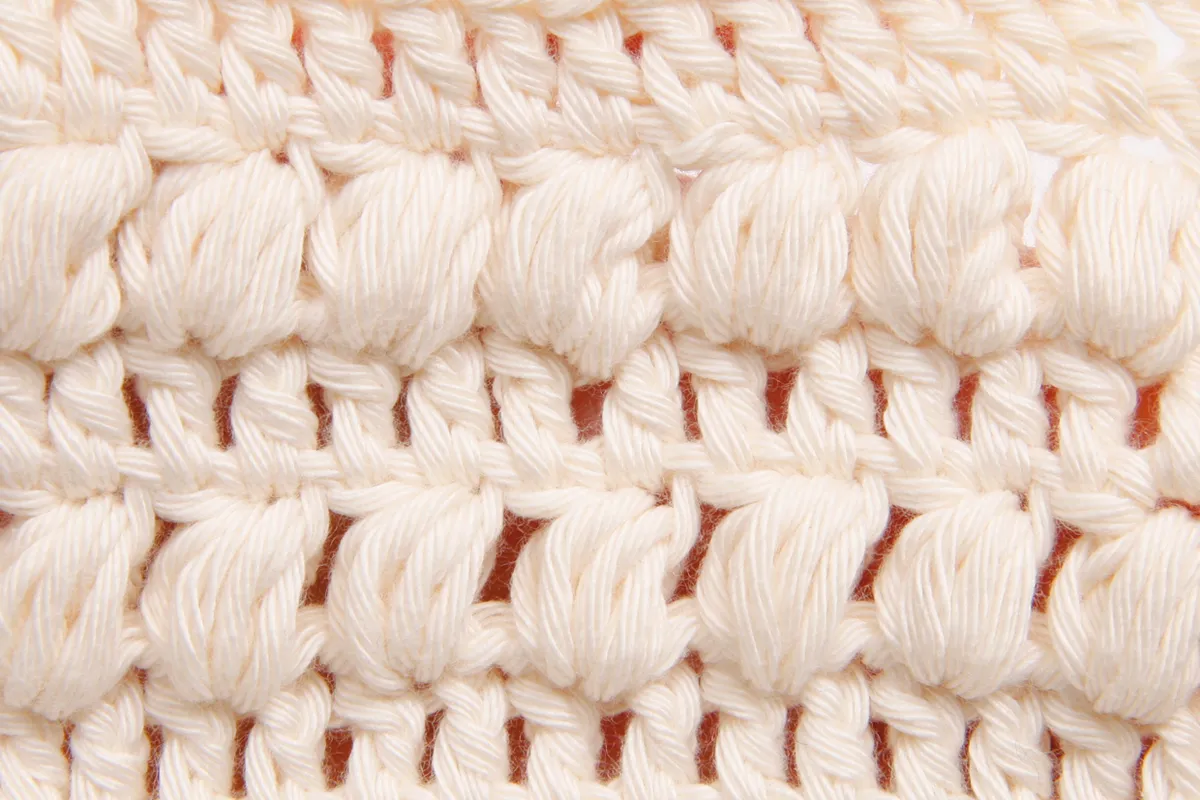
There are a whole range of crochet stitches for texture such as bobble stitch or popcorn stitch. One of our favourite stitches is definitely the puff stitch.
This squishy stitch is achieved by making a combination of incomplete stitches. You pull up the active loop to create a plump and thick cluster which are all finally combined into one puff stitch.
Essentially you’re packing multiple stitches into the width of a single stitch, which gives you the fabulous puff effect. They’re great for adding in to a project to give an odd bit of texture, or working for entire rows to create a fabulous textured line of stitches.
You can learn how to crochet puff stitches with our handy step-by-step picture and video tutorial. It’s worth noting that puff stitches can vary in the amount of stitches used to create them. If you’re following a pattern that uses puff stitches you should always read the instructions carefully.
- Try out puff stitches with this Free puff stitch granny square blanket crochet pattern from Gathered
Waffle stitch
Best for creating a thicker fabric

Our final pick of the best crochet stitches for blankets is another one that uses post stitches to create a terrific texture – waffle stitch! As the name suggests, it’s a stitch that creates a raised waffle surface that feels fabulous and will make your blanket feel lovely and thick.
In many ways it’s similar to basketweave stitch, but only requires front post stitches and is a bit easier to understand the pattern sequence. It’s a great stitch for using with solid coloured yarns, and works particularly well for baby blankets .
- Check out our How to crochet waffle stitch tutorial today!
When is it an Afghan or a blanket?
There’s not really any difference between an Afghan and a crochet blanket. Afghan is just a word that is more commonly used in the US for traditional crochet blankets often made from motifs. Take a look at our Top crochet afghan patterns to see some inspiring projects.

Can I use different crochet stitches for blankets?
Of course you can, and plenty of people would say the more stitches the better!
The only thing you need to keep in mind is that some techniques will require a different amount of stitches for their repeats, so you may need to account for this at the start and end of your rows. But when using simple stitches, it’s loads of fun to mix things up!
Learn as many stitches as you can
The more stitches you know, the more creative you can be with your crochet! Find all of the most common ones in the library of crochet stitches from Gathered.
